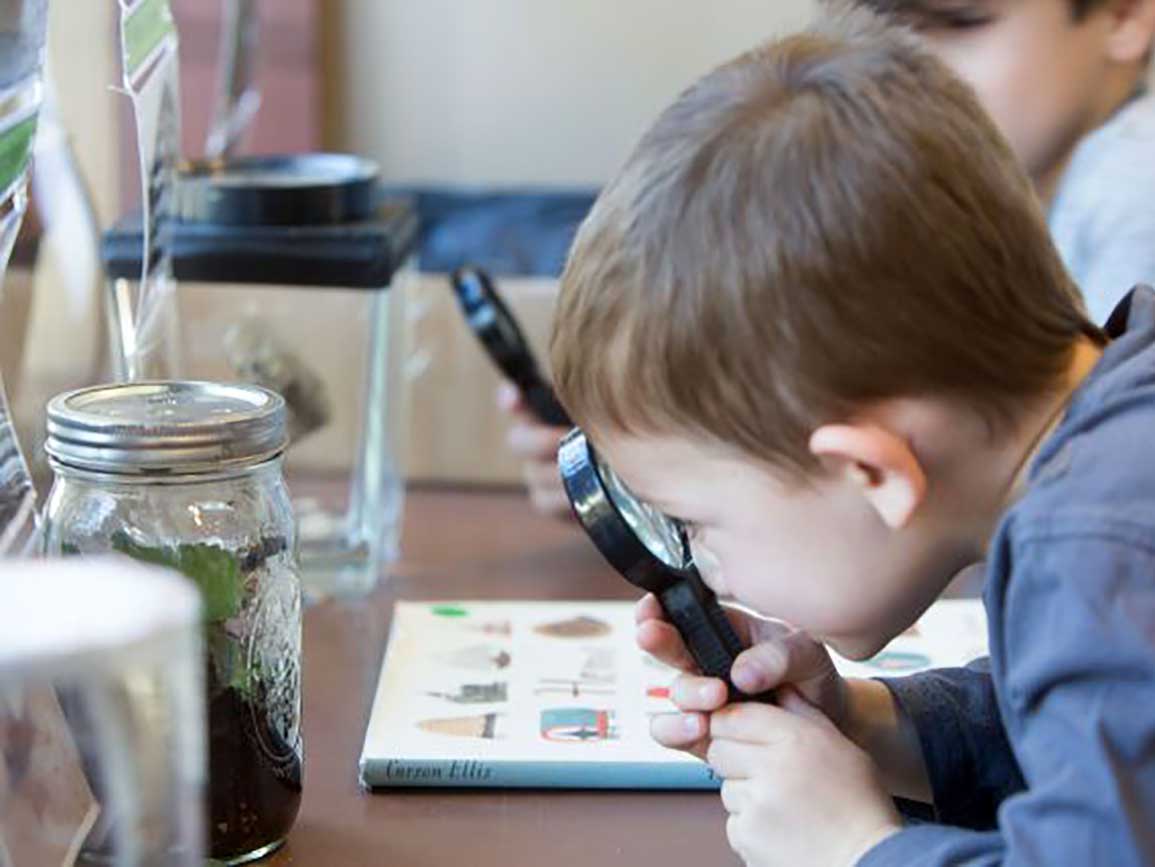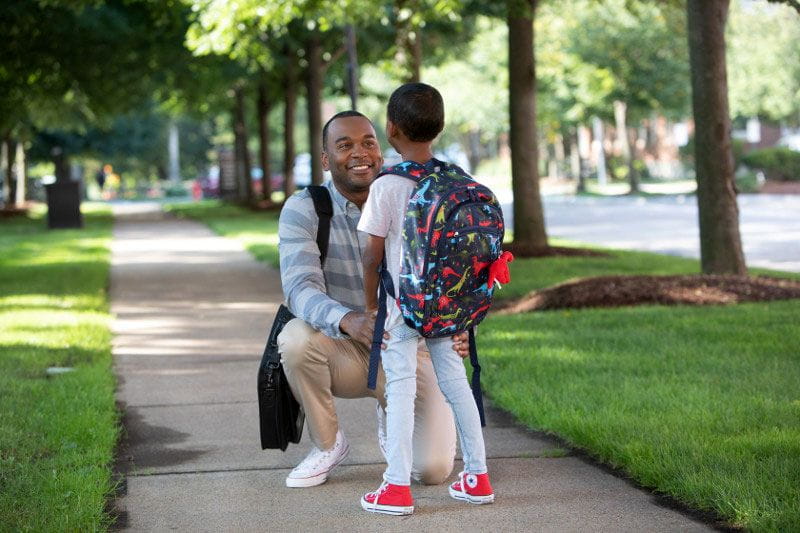Benefits of outdoor play and activities for kids
You've probably heard about the benefits of nature and outdoor play for children. According to the National Wildlife Federation, outdoor play boosts fitness and decreases the risk of childhood obesity, increases focus and academic achievement, reduces stress, and increases feelings of well-being.
Spending time outside will help make sure your family gets exercise and plenty of fresh air, too. Try these 17 family games and outdoor activities curated by our early childhood experts.
Simple family outdoor activities for children
- Go on a walk. Walking as a family is a simple way to get outside and connect with nature. Whether it’s a stroll around your neighborhood, a walk to the park, or a casual hike, these moments are full of opportunities for exploration and discovery. Slow down and let your toddler observe things that adults often overlook, like colorful flowers or scurrying insects. Make your walks fun by introducing weekly themes, such as finding as many blue objects as possible or counting how many different plants you see. You can even turn it into a treasure hunt and, once back indoors, create an artful nature collage with the items you’ve collected.
- Take a bike ride. Another great family outdoor activity is cycling. This can be easy to accomplish, too, especially if you choose an evening ahead of time based on the rest of your schedule and set aside 30 minutes to an hour. If you’d rather go on a longer ride, dedicate part of the weekend to a ride along the beach, around the lake, or through the park.
- Do yoga. Grab a towel or yoga mat and head out to your backyard or a local park or beach where there’s plenty of open space to keep a safe distance from your fellow outdoor enthusiasts. Practice different poses, like tree pose, downward dog, and butterfly…and pair up to do poses like sunrise/sunset. Not only is this a great way to get outside and have some family fun, it’s also a stress reliever and can help everyone relax or unwind after a long day at home, work, or childcare.
- Hang out in the yard. When was the last time your family pulled out a picnic blanket and enjoyed nature from your own backyard? You don’t have to go far to take in all that the great outdoors offers. Outdoor exploration for babies is especially beneficial, where they can crawl, walk, and explore a variety of textured surfaces like grass, sand, or dirt. With toddlers or preschoolers, use this time to point out and name birds, squirrels, insects, and plants, turning your yard into an outdoor classroom.
- Gather natural materials Offer your child a variety of natural and re-purposed materials— such as old metal pie tins, sticks, ribbon, wire, spoons, shells, or rocks — and head outside to explore them. Ask your child, “What can you make with these materials? How about wind chimes, a bird feeder, or an old-fashioned mud pie? Younger children can enjoy simple, sensory-rich tasks like mixing mud or arranging leaves and rocks into patterns.
- Play with rocks. . It’s fun to collect rocks, make sculptures, toss rocks, or use small stones to create designs or form letters. Explain that, like people, no two rocks are exactly alike. Look for rocks that are similar in size, shape, color, or texture. Create a science laboratory where you can weigh and measure rocks. Older children might research the different types of rocks, such as sedimentary or metamorphic.
- Be tourists in your own city. Have you ever wondered about the history and legends of your community? Do you know which Native American tribes first settled the area? Have you noticed the types of architecture? Do you know the history behind the statues in the local park? Are you looking to find nature in an urban setting? Become tourists in your own town with safe-to-do exploration around the closest big city in your area.
- Nurture your family with nature. Visit fish hatcheries, farms, forests, and wildlife preserves, as well as local parks, streams, lakes, woods, and community gardens. Try incorporating outdoor play into your family fun. Use magnifying glasses to search for tiny insects, cameras to photograph the sights you see, and tape measures to measure the circumference of trees or the heights of plants. Use field guides or apps, such as the Cornell Lab Bird app, to identify the plants and birds in your area. Look for pictures in the clouds or watch stars at night.
- Make storytelling a part of your family culture. Reading to your child is one of the best ways to make memories, transfer values, and improve language and literacy skills. Read classics like Charlotte’s Web or Winnie the Pooh together. Act stories out or put on a puppet show for even more family fun. When it’s warm, you can turn this into a summertime outdoor theater.
- Play flashlight tag. It stays light out pretty late during the summer, but if you find that you don’t have time to get outside before the sun goes down, play flashlight tag in a safe area like your backyard. Each player a flashlight and one person starts as “it,” counting to 30 while the others hide. Using their flashlight, the “it” player searches for others, tagging them by shining the beam on them and calling out their name. This game encourages both movement and excitement.
- Play ball.You probably have a rubber ball, basketball, baseball, soccer ball, or something similar lying around the house…take it outside! Depending on how old your kids are, you can do something simple, such as playing catch, or you can play a more involved game, like alphabet ball, kickball, or basketball (with a real hoop…or you can make do with a bucket, bin, or cup, depending on the size of the ball).
- Go for a swim. If you have a pool at home or live near a lake or beach, set aside time each week to take a dip. Incorporate water games, such as Red Light/Green Light, Simon Says, and dolphin and mermaid races. Or take this opportunity to teach younger children how to feel comfortable in open water.
- Explore pond life. With older children, you can get an up-close view of a local pond. Cut the ends off a large food container or plastic milk jug, and secure plastic wrap over one end with a rubber band or waterproof tape. Place the wrapped end of the container in a stream or pond. Look into the other end. The glare of the sun is diminished when looking through the container, so it's easier to see plant and animal life in the water.
- Start a garden. Gardening is another fantastic family outdoor activity that teaches children about nature while providing valuable skills. Need vegetables or herbs for that salad you’ll make together? Whether you have a backyard, a small porch, or a windowsill, with a few packets of seed, you can have a garden. Older children especially are at an ideal age to learn about gardening. If you have the space, you can try easy-to-grow crops like lettuce, carrots, peas, and tomatoes in a full-size garden, a raised bed, or even pots. Try fast-growing flowers like pansies, nasturtiums, or sunflowers.
- Nature hide & seek. Choose a small object, like a colorful rock, leaf, or pinecone, and hide it somewhere in your yard or a park. Provide verbal clues to guide your child to finding the object, such as “It’s near something tall” or “It’s hidden under something rough.” As they search, they’ll practice observation, critical thinking, and spatial awareness, all while exploring their environment. To make it even more fun, let them take turns being the hider and create their own clues for you to solve.
- Simon says. Take the classic game of Simon Says outdoors with a fun, nature-themed twist! The leader can give commands like “Simon says hop like a bunny,” “Simon says pick up a leaf,” or “Simon says sway like a tree in the wind.” Players must pay close attention and only follow instructions that begin with “Simon says". This activity promotes active listening and movement while encouraging children to connect with their surroundings by imitating animals, exploring natural objects, and expressing creativity through playful motions.
- Birdwatching. Give children a simple bird guidebook or a smartphone app to help them identify local birds. Sit in a quiet outdoor space and observe the birds, noting different species, behaviors, and sounds. This activity encourages children to ask questions and make observations, which fosters curiosity and builds skills in identification, classification, and even basic data collection.
Quality time together builds strong relationships and satisfying memories. When these activities are taken outside, you are increasing the overall benefits of family time by spending time in nature and by modeling healthy habits like getting exercise and fresh air. So, get out there. Turn over a rock. Feel the breeze on your face. Get some dirt on your shoes.
More on outdoor activities and children
Discover some low-cost nature-based STEM activities you can do with your children.
Understand how learning extends to the playground offering a wealth of cognitive and social-emotional learning opportunities.





